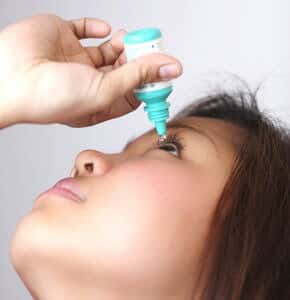
Dry eyes are an extremely common condition, and they can also be quite distressing. The eyes may feel constantly irritated, as though they had something in them. People with dry eyes don’t seem to make enough tears, and without appropriate treatment the disorder can grow worse. Sufferers may use artificial tears or other medicines to try to reverse the condition. Some of these are quite pricey, however. Could a simple home remedy using warm compresses help?
How Do You Use Warm Compresses to Soothe Dry Eyes?
Q. I am a retired medical provider with a suggestion. Dry eyes are caused in part by age-related changes in our tear films. The outer oily layer thickens and blocks the meibomian glands that make it. As a result, they don’t secrete it as readily and it’s not available to stabilize the water layer. Consequently, the tear film evaporates too easily.
Applying warm tap water compresses for 3 to 4 minutes while gently massaging the eyelids will soften those oils in the glands. Then the glands secrete more oil, which helps stabilize the tear film.
The warm compresses also increase blood flow to the lids to help them heal. This should be done three times a day for two weeks, then twice a day for two weeks and then every morning.
Artificial tears without benzalkonium can add significant relief. This takes time and effort, but in my experience it works.
Treating Meibomian Gland Problems:
A. Warm compresses are a classic treatment for dry eyes caused by meibomian gland dysfunction. You are right that when these oil-secreting glands get plugged, the tear film deteriorates.
Japanese researchers report that warm compresses containing menthol improve tear film volume and stability and ease dry eye symptoms (Arita et al, Scientific Reports, April 5, 2017).
LipiFlow for Meibomian Glands:
A machine that warms the eyelids and provides gentle pressure (LipiFlow) has received FDA approval. A single treatment can provide dry-eye relief up to a year (Blackie et al, Clinical Ophthalmology, July 26, 2016).
One drawback of the machine treatment, however, is expense. The office procedure can run to hundreds of dollars, while your recommended compress treatment is free.

